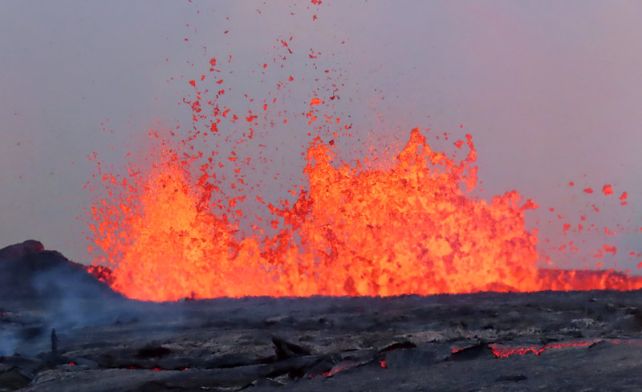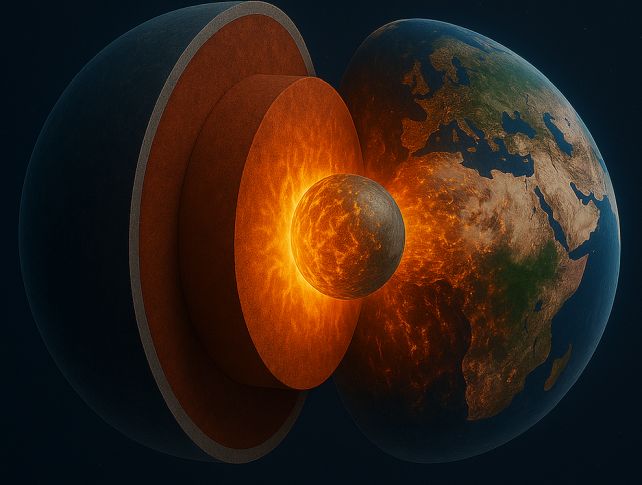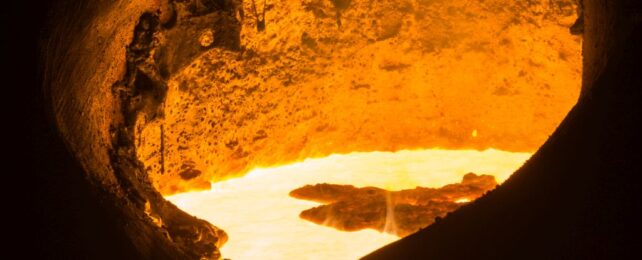Earth's core is rich with gold, and it's leaking out through the mantle and into the crust, new research has found.
A new study of isotopes found in the volcanic rock that oozed out from deep under the lithosphere has revealed precious metals in Earth's crust, including gold, initially leaked out of the core before beginning the long, long journey up to the surface, borne on convecting magma.
"When the first results came in, we realized that we had literally struck gold!" says geochemist Nils Messling of Göttingen University in Germany. "Our data confirmed that material from the core, including gold and other precious metals, is leaking into the Earth's mantle above."
Although we can access gold in Earth's crust, the amount there is an estimated minuscule fraction of the total quantity that our planet possesses. Like a dragon, Earth is hoarding most of its gold: research suggests more than 99 percent is in its metallic core – enough to cover all of Earth's land in gold 50 centimeters (20 inches) thick.

It makes sense: when still forming, the heavier elements sank down through the planet's mooshy interior and ended up sequestered in the differentiated core, a process known as the iron catastrophe. Later, meteor bombardment delivered more gold and heavy metals to the crust.
Although we have good evidence that primordial helium and heavy iron isotopes are leaking from Earth's core, it's been unclear how much of the heavy metal we find on the surface is from the core and how much is from space.
There is, however, a way to investigate: isotopes of a precious heavy metal called ruthenium. Isotopes are variations of the same element that have different numbers of neutrons.
The isotopes of ruthenium in Earth's core are slightly different from surface ruthenium. That difference had been too small to really detect, but Messling and his colleagues developed new analysis techniques that allowed them to tease them out.
They used their new techniques to study ruthenium that was dug out of volcanic rock on the Hawaiian islands, and discovered a significantly higher amount of ruthenium-100 than can be found in the ambient mantle. That's the isotope of ruthenium that originated in Earth's core.

This discovery suggests that all the siderophile elements – those that migrated to the core when the Earth was young and molten all the way through – are leaking out of the core. That includes ruthenium, of course, but also elements such as palladium, rhodium, platinum – and gold.
It won't be emerging at a particularly high rate, nor can we just dig down 2,900 kilometers (1,800 miles) to get it. Rather, the finding tells us something new about our own planet, and perhaps other rocky planets, too.
"Our findings not only show that the Earth's core is not as isolated as previously assumed," says geochemist Matthias Willbold of Göttingen University.
"We can now also prove that huge volumes of superheated mantle material – several hundred quadrillion metric tons of rock – originate at the core-mantle boundary and rise to the Earth's surface to form ocean islands like Hawaii."
The research has been published in Nature.
